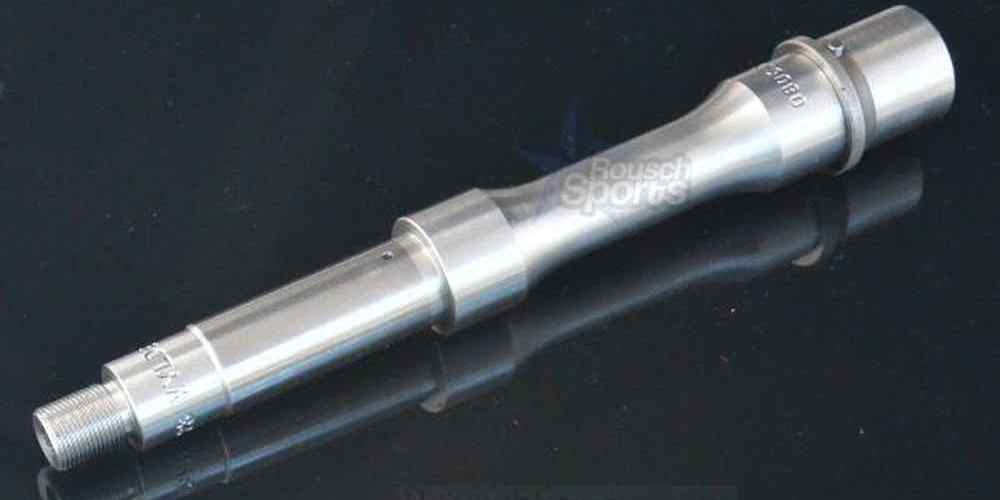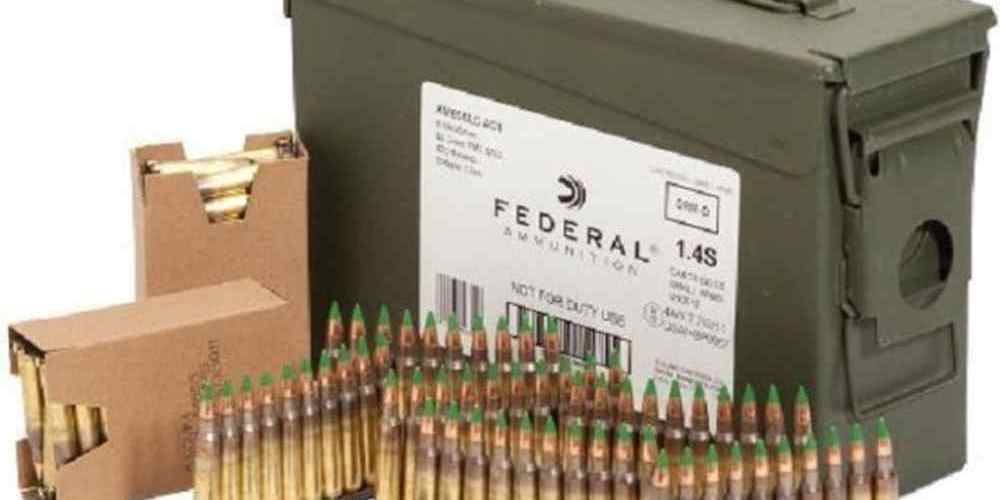“From military origins to civilian favorite, the evolution of AR15 ammunition.”
Development of AR15 Ammunition
The AR15 rifle is one of the most popular firearms in the United States, known for its versatility, accuracy, and reliability. One key factor that contributes to the AR15’s success is its ammunition. The development of AR15 ammunition has a rich history that has evolved over time to meet the demands of shooters and advancements in technology.
The AR15 was originally designed in the 1950s by Eugene Stoner for the military, and it was chambered in the .223 Remington cartridge. This cartridge was specifically designed for the AR15 rifle, with its small size and high velocity making it ideal for military use. The .223 Remington cartridge quickly gained popularity among civilian shooters as well, due to its flat trajectory and low recoil.
As the AR15 platform gained popularity in the civilian market, manufacturers began to experiment with different types of ammunition to improve performance. One of the most significant developments in AR15 ammunition was the introduction of the 5.56x45mm NATO cartridge. This cartridge is very similar to the .223 Remington, but it has slightly different dimensions and is loaded to higher pressures. The 5.56x45mm NATO cartridge became the standard ammunition for military forces around the world, and it is now the most common cartridge used in AR15 rifles.
In recent years, there has been a growing trend towards developing specialized ammunition for the AR15 platform. One example of this is the .300 Blackout cartridge, which was designed to provide better performance at short ranges while still being compatible with standard AR15 magazines and bolt carriers. The .300 Blackout cartridge has gained popularity among hunters and shooters who want a more powerful round for close-quarters shooting.
Another recent development in AR15 ammunition is the rise of hollow-point and polymer-tipped bullets. These bullets are designed to expand upon impact, causing more damage to the target and increasing stopping power. While these bullets are not suitable for military use due to the Hague Convention prohibiting expanding bullets in warfare, they have become popular among civilian shooters for self-defense and hunting.
Overall, the history and evolution of AR15 ammunition have been driven by a desire to improve performance and meet the needs of shooters. From the original .223 Remington cartridge to the modern .300 Blackout and specialized bullets, AR15 ammunition has come a long way since its inception. As technology continues to advance, we can expect to see even more innovations in AR15 ammunition in the future.
In conclusion, the development of AR15 ammunition has been a fascinating journey that has led to the creation of some of the most versatile and effective cartridges in the firearms industry. Whether you are a hunter, competitive shooter, or just a firearms enthusiast, there is a wide range of AR15 ammunition options available to suit your needs. So next time you load up your AR15 rifle, take a moment to appreciate the history and evolution of the ammunition that makes it all possible.
Military Adoption of AR15 Ammunition
The AR15 rifle is a popular firearm that has been in use for decades. One of the key components of the AR15 is its ammunition, which has evolved over time to meet the changing needs of military forces around the world.

The history of AR15 ammunition dates back to the 1950s when the rifle was first developed by Eugene Stoner. The original ammunition used in the AR15 was the .223 Remington cartridge, which was specifically designed for the rifle. This cartridge was chosen for its high velocity and flat trajectory, making it ideal for military use.
As the AR15 gained popularity among military forces, the ammunition used in the rifle began to evolve. In the 1960s, the US military adopted the M193 cartridge, which was a slightly modified version of the .223 Remington. This new cartridge featured a 55-grain bullet and a higher velocity, making it even more effective in combat situations.
Throughout the 1970s and 1980s, the US military continued to refine the ammunition used in the AR15. The M855 cartridge was introduced in the 1980s, featuring a 62-grain bullet with a steel penetrator tip. This new ammunition was designed to improve the rifle’s performance against armored targets, making it a valuable asset on the battlefield.
In recent years, the US military has continued to update the ammunition used in the AR15. The M855A1 cartridge was introduced in 2010, featuring a lead-free bullet with a steel penetrator tip. This new ammunition is designed to be more environmentally friendly while still providing the same level of performance as previous cartridges.
The evolution of AR15 ammunition has not been limited to the US military. Military forces around the world have adopted the rifle and its ammunition, with many countries developing their own versions of the cartridge. This has led to a wide variety of ammunition options for the AR15, each designed to meet the specific needs of different military forces.
In addition to military use, the AR15 and its ammunition have also become popular among civilian shooters. The versatility and reliability of the rifle make it a favorite among gun enthusiasts, who appreciate its accuracy and ease of use. The availability of a wide range of ammunition options for the AR15 has only added to its appeal among civilian shooters.
Overall, the history and evolution of AR15 ammunition have been shaped by the changing needs of military forces and civilian shooters alike. From the original .223 Remington cartridge to the modern M855A1, the ammunition used in the AR15 has continued to improve and adapt to meet the demands of the modern battlefield. Whether in military or civilian hands, the AR15 and its ammunition remain a powerful and effective tool for shooters around the world.
Civilian Use of AR15 Ammunition
The AR15 rifle has become a popular choice among civilian gun owners in the United States. One of the key factors contributing to its popularity is the ammunition it uses. The history and evolution of AR15 ammunition is a fascinating topic that sheds light on the development of firearms technology over the years.
The AR15 was originally designed by Eugene Stoner in the late 1950s for military use. The rifle was chambered in 5.56x45mm NATO, a cartridge that was specifically developed for the M16 rifle, the military version of the AR15. The 5.56x45mm NATO cartridge was designed to be lightweight and have a high velocity, making it ideal for use in combat situations.
As the AR15 gained popularity among civilian gun owners, the demand for ammunition also increased. This led to the development of a wide range of ammunition options for the AR15, including different bullet weights, casings, and powders. Today, there are countless options available for AR15 ammunition, each designed to meet the specific needs and preferences of individual shooters.
One of the key factors that has driven the evolution of AR15 ammunition is the desire for improved performance. Over the years, manufacturers have developed new bullet designs and powders that are designed to increase accuracy, range, and stopping power. These advancements have made the AR15 a versatile and effective firearm for a wide range of shooting applications.
Another factor that has influenced the evolution of AR15 ammunition is the changing regulatory landscape. In recent years, there has been a push for stricter gun control laws, which has led to restrictions on certain types of ammunition. As a result, manufacturers have had to develop new ammunition options that comply with these regulations while still providing the performance that shooters expect from their AR15 rifles.
Despite these challenges, the popularity of the AR15 continues to grow, and manufacturers are constantly innovating to meet the demands of civilian gun owners. Today, shooters can choose from a wide range of AR15 ammunition options, including hollow point, full metal jacket, and match grade rounds. Each type of ammunition is designed for a specific purpose, whether it’s hunting, target shooting, or self-defense.
In conclusion, the history and evolution of AR15 ammunition is a testament to the ingenuity and creativity of firearms manufacturers. From its origins as a military cartridge to its current status as a popular choice among civilian gun owners, AR15 ammunition has come a long way. As technology continues to advance, we can expect to see even more innovations in the world of AR15 ammunition, making this iconic rifle even more versatile and effective for shooters of all skill levels.
Technological Advances in AR15 Ammunition
The AR15 rifle has become one of the most popular firearms in the United States, known for its versatility, accuracy, and ease of customization. One key component of the AR15 is its ammunition, which has undergone significant changes and improvements over the years to enhance performance and meet the needs of shooters.
The history of AR15 ammunition dates back to the 1950s when the rifle was first developed by Eugene Stoner. The original ammunition used in the AR15 was the .223 Remington, a small-caliber round that was designed for varmint hunting. This ammunition was lightweight and had a high velocity, making it ideal for shooting small game at long distances.
As the popularity of the AR15 grew, so did the demand for ammunition that could perform in a variety of shooting scenarios. In response to this, manufacturers began to develop new types of ammunition that could deliver improved accuracy, range, and stopping power. One of the most significant advancements in AR15 ammunition came in the form of the 5.56x45mm NATO round, which was adopted by the U.S. military in the 1960s.
The 5.56x45mm NATO round was based on the .223 Remington cartridge but featured a slightly longer case and a higher chamber pressure. This resulted in increased muzzle velocity and energy, making it more effective at longer ranges and against armored targets. The adoption of the 5.56x45mm NATO round by the military helped to solidify the AR15 as a reliable and versatile weapon system.
In recent years, there have been further advancements in AR15 ammunition, with manufacturers developing new rounds that offer even greater performance and versatility. One example of this is the .300 Blackout round, which was designed to provide improved terminal ballistics and subsonic performance for use in suppressed firearms.
The .300 Blackout round is compatible with standard AR15 magazines and bolts, making it easy for shooters to upgrade their rifles without having to make significant modifications. This round has gained popularity among hunters and tactical shooters for its ability to deliver consistent performance at both short and long ranges.
Another recent development in AR15 ammunition is the 6.5 Grendel round, which was designed to offer improved long-range performance and accuracy. This round features a larger caliber bullet with a higher ballistic coefficient, allowing it to maintain velocity and energy over greater distances.
The 6.5 Grendel round has gained a following among competitive shooters and long-range enthusiasts for its ability to deliver consistent accuracy and performance out to 1,000 yards or more. With advancements in bullet design and powder technology, the 6.5 Grendel round has become a popular choice for shooters looking to push the limits of their AR15 rifles.
In conclusion, the history and evolution of AR15 ammunition have been marked by significant advancements in performance, versatility, and reliability. From the original .223 Remington cartridge to the modern 6.5 Grendel round, manufacturers have continued to push the boundaries of what is possible with AR15 ammunition. As technology continues to advance, we can expect to see even more innovations in AR15 ammunition that will further enhance the capabilities of this iconic rifle platform.
Impact of AR15 Ammunition on Firearms Industry
The AR15 rifle has become one of the most popular firearms in the United States, known for its versatility, accuracy, and reliability. One key factor that has contributed to the AR15’s success is its ammunition. The history and evolution of AR15 ammunition have played a significant role in shaping the firearms industry as we know it today.
The AR15 was originally designed in the 1950s by Eugene Stoner for the military. The original ammunition used in the AR15 was the .223 Remington cartridge, which was developed by Remington Arms in 1957. The .223 Remington cartridge was designed to be a high-velocity, flat-shooting round that could deliver excellent accuracy at long distances.
Over the years, the .223 Remington cartridge has undergone several modifications and improvements to enhance its performance. One of the most significant developments in AR15 ammunition was the introduction of the 5.56x45mm NATO cartridge in the 1960s. The 5.56x45mm NATO cartridge is very similar to the .223 Remington cartridge but has slightly different dimensions and is loaded to higher pressures. This allows the 5.56x45mm NATO cartridge to achieve higher velocities and better terminal ballistics than the .223 Remington cartridge.
The adoption of the 5.56x45mm NATO cartridge by the military had a profound impact on the firearms industry. The increased demand for firearms chambered in 5.56x45mm NATO led to the widespread adoption of the AR15 platform by civilian shooters. Today, the AR15 is one of the most popular rifles in the United States, with millions of units sold each year.
The popularity of the AR15 platform has also led to a wide variety of ammunition options for shooters to choose from. In addition to the standard .223 Remington and 5.56x45mm NATO cartridges, there are now a plethora of specialized ammunition options available for the AR15. These include hollow-point rounds for hunting, frangible rounds for training, and match-grade rounds for precision shooting competitions.
One of the most recent developments in AR15 ammunition is the introduction of the .300 Blackout cartridge. The .300 Blackout cartridge was designed to provide AR15 shooters with a larger caliber round that could be used in standard AR15 magazines and upper receivers. The .300 Blackout cartridge has gained popularity among shooters looking for a more powerful round for hunting or self-defense.
The evolution of AR15 ammunition has not only expanded the capabilities of the AR15 platform but has also driven innovation in the firearms industry as a whole. Manufacturers are constantly developing new and improved ammunition options for the AR15, pushing the boundaries of what is possible with this versatile rifle.
In conclusion, the history and evolution of AR15 ammunition have had a profound impact on the firearms industry. The development of the .223 Remington and 5.56x45mm NATO cartridges laid the foundation for the success of the AR15 platform, while newer cartridges like the .300 Blackout continue to push the boundaries of what is possible with this iconic rifle. As technology continues to advance, we can expect to see even more exciting developments in AR15 ammunition in the years to come.




